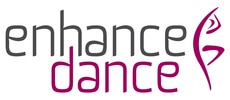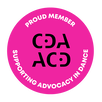|
Looking for guidance about teaching and dance training during the COVID-19 pandemic? There are several great resources to guide you while dancing at home and when returning to the studio:
Wondering what you need to know to be an effective teacher?
"Dance educators need training in pedagogy that includes not only learning what to teach, but also how to teach. Core principles include the need to:
Learn more about the necessary knowledge base for dance teachers in Dance International's article Toward a Scope of Practice by Andrea Downie. The goal is for young children to enjoy learning through music, movement and dance. Have them explore a variety of movement activities and skills, using their senses (visual, auditory and kinaesthetic) to learn about themselves and the world we live in. Incorporate activities that will help them learn fundamental movement skills, observation and listening skills, as well as how to conduct themselves in a group. Strive for a balance between novelty (introducing new movements/activities) and repetition (practicing things they already know). Maintaining a predictable lesson structure is important; children will feel more comfortable to try new movements and activities within a familiar structure.
- Andrea Downie Share the benefits of dancing with your dancers and their families.
SOCIAL BENEFITS "Dancers have a heightened sense of communication and social relations. Dancing promotes interpersonal knowledge, fosters relationships, and promotes social awareness. Young artists perform community service more than 4 times as often as their peers. By moving together, dancers of all ages learn the important social skills of cooperation and collaboration. They also develop a sense of inclusion, increased empathy, and respect for diversity. Dancers gain awareness of diverse cultures, values, and customs by performing dances both from their own and other societies." (Andrea Downie, 2015) Learn more in the Healthy Dancer Canada resource, Providing Support to Dancers, by Andrea Downie. Share the benefits of dancing with your dancers and their families.
EMOTIONAL BENEFITS "Dancers communicate and express feelings through movement. The emotional and mental-health benefits of regular dancing include increased self-esteem and body image; reduced anxiety, depression, and stress. Dancing can improve mood by helping those who dance feel good through the release of endorphins in the brain. Dancing cultivates intrapersonal knowledge and self-confidence. Some dancers find it is a constructive way to channel their emotions." (Andrea Downie, 2015) Learn more about the emotional benefits of dancing in the Healthy Dancer Canada resource, Providing Support to Dancers, by Andrea Downie. Share the benefits of dancing with your students and their families.
COGNITIVE BENEFITS "Dancers learn and express ideas through movement. Some of the benefits of dancing to cognitive development and function include: increased attention, concentration, and motivation; use of perceptual, observation and listening skills; creative-thinking, problem-solving and decision-making skills. Dancing nurtures imagination and creativity. It also encourages kinesthetic, spatial, and musical learning. Young people who regularly participate in the arts [dance] during their out-of-school hours are 4 times more likely to be recognized for academic achievement than their peers, while older people who regularly dance are 10% less likely to develop dementia." (Andrea Downie, 2015) Learn more about the cognitive benefits of dancing in the Healthy Dancer Canada resource, Providing Support to Dancers, by Andrea Downie. Share the benefits of dancing with your students and their families.
PHYSICAL BENEFITS "Dancers acquire numerous physical benefits from dancing regularly. Dancing uses the entire body and teaches those who dance many of the fundamental movement skills that underlie physical literacy, particularly locomotor skills like galloping and leaping, and balance movements like spinning and rolling. Dancing also supports the development and maintenance of physical fitness, specifically postural alignment, agility, balance and coordination, muscular strength and endurance, flexibility, and rhythmic abilities. Dancing can help alleviate pain and delay the effects of aging. Like all physical activity, dancing promotes physical health and longevity by postponing chronic disease." (Andrea Downie, 2015) Learn more about the physical benefits of dancing in the Healthy Dancer Canada resource, Providing Support to Dancers, by Andrea Downie. |
Archives
September 2020
Categories
All
|

 RSS Feed
RSS Feed


